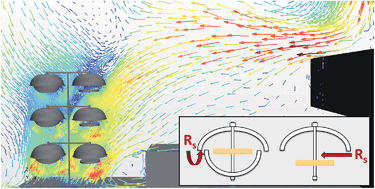Effects of room airflow on accurate determination of PUF-PAS sampling rates in the indoor environment†
Abstract
Accurate and precise interpretation of concentrations from polyurethane passive samplers (PUF-PAS) is important as more studies show elevated concentrations of PCBs and other semivolatile air toxics in indoor air of schools and homes. If sufficiently reliable, these samplers may be used to identify local sources and human health risks. Here we report indoor air sampling rates (Rs) for polychlorinated biphenyl congeners (PCBs) predicted for a frequently used double-dome and a half-dome PUF-PAS design. Both our experimentally calibrated (1.10 ± 0.23 m3 d−1) and modeled (1.08 ± 0.04 m3 d−1) Rs for the double-dome samplers compare well with literature reports for similar rooms. We determined that variability of wind speeds throughout the room significantly (P < 0.001) effected uptake rates. We examined this effect using computational fluid dynamics modeling and 3-D sonic anemometer measurements and found the airflow dynamics to have a significant but small impact on the precision of calculated airborne concentrations. The PUF-PAS concentration measurements were within 27% and 10% of the active sampling concentration measurements for the double-dome and half-dome designs, respectively. While the half-dome samplers produced more consistent concentration measurements, we find both designs to perform well indoors.



 Please wait while we load your content...
Please wait while we load your content...